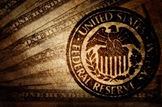January FOMC Meeting and Gold
 Yesterday, the Federal Reserve released their most recent monetary policy statement. How can it affect the gold market?
Yesterday, the Federal Reserve released their most recent monetary policy statement. How can it affect the gold market?
As expected, the Fed kept interest rates unchanged at between 0.25 and 0.50 percent. In December, the Fed hiked its interest rates for the first time in nine years and signaled it planned to raise them by one percentage point in 2016.
Fed faces the facts?
Bad economic news since the December meeting have convinced the FOMC members to be more dovish. The U.S. central bank acknowledged: “economic growth slowed late last year”. Moreover, the Fed noticed: “net exports have been soft and inventory investment slowed”. The FOMC members also downgraded their view on household spending and business investment growth to “moderate” from “strong” in December. And the statement does not say anything about the balance of risks, after the December remark that these risks were “balanced”. But now we can read that “the Committee is closely monitoring global economic and financial developments and is assessing their implications for the labor market and inflation, and for the balance of risks to the outlook”, which means that the Fed is worried about China and will probably not hike if the market does not stabilize.
Fed was wrong on inflation
In December, the U.S. central bank wrote in its monetary policy statement: “inflation is expected to rise to 2 percent over the medium term as the transitory effects of declines in energy and import prices dissipate”. However, these effects do not want to dissipate for months. We showed yesterday that market inflation expectations are declining. This is why the FOMC members added in January: “inflation is expected to remain low in the near term”. If they decided to include these words, it means that they are really worried about inflation. In fact, the U.S. central bankers must be upset, since they started to admit that they were terribly wrong on this issue. James Bullard, the president of the St. Louis Federal Reserve Bank, admitted recently: “we are 18 months into this and I am starting to wonder if my story is the right one”.
Is the labor market really so strong?
The only bright spot in the Fed’s statement is the labor market. We can read that “information received since the Federal Open Market Committee met in December suggests that labor market conditions improved further” and that “a range of recent labor market indicators, including strong job gains, points to some additional decline in underutilization of labor resources”. We were always skeptical about the health of the labor market suggested by the official data. We pointed out, for example, that the decline of the unemployment rate after the 2007-09 recession coincided with an increase in the number of individuals out of the labor force. Now, it turns out that even the Fed’s economists are skeptical whether the official unemployment data is a reliable measure of labor market health. This is why Andreas Hornstein and Marianna Kudlyak from the Federal Reserve Bank of Richmond and Fabian Lange from McGill University constructed a more comprehensive way of examining resource utilization in the U.S. labor market. As one can see in the chart below, their non-employment index (NEI), which counts those who are unemployed (as traditionally defined) and those who have dropped out of the labor force, is much higher than the official unemployment. It is also decreasing, however, at a slower pace.
Chart 1: The official Civilian Unemployment Rate and the Non-Employment Index.

Conclusions
To sum up, the January FOMC statement was dovish. The Fed’s new view on the U.S. economy suggests fewer interest rate hikes in 2016. The U.S. central bank noticed that the economy is slowing down, the inflation rate is stubbornly low, and market inflation expectations are decreasing (but it still believes that the labor market is robust). In such an environment, the Fed’s stance would be more dovish than previously expected. This is good news for the gold market. Indeed, the price of gold climbed in the wake of the FOMC statement. We pointed out many times that the FOMC’s projections of the fed funds rates are completely unreliable, so the worrisome recent U.S. economic data may prompt the Fed to tighten more gradually than expected, which should be bullish for the price of gold in 2016.
Thank you.
Arkadiusz Sieron
Sunshine Profits‘ Gold News Monitor and Market Overview Editor















